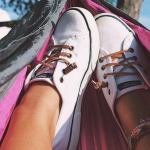Columbia Sportswear Companys U.S. sales tumbled 18% in the second quarter as reduced consumer spending levels and tighter credit markets “caused retailers to request unusual and unpredictable levels of order delays and cancellations.” The company posted a quarterly loss against decent profit last year. COLMs latest forecast had called for earnings of 3 cents per share
While part of the U.S. decline was attributable to a late spring, company President and CEO Tim Boyle attributed the bulk of the decline to publicly traded retailers cleaning up inventory amid declining comps.
“The net sales decline is almost entirely due to lower sales of [the] Columbia brand in the U.S.,” said Boyle. “And that decline can be attributed to the unexpectedly high volume of cancellations we received on our Spring order book during the quarter.”
“The net sales decline is almost entirely due to lower sales of [the] Columbia brand in the U.S.,” said Boyle. “And that decline can be attributed to the unexpectedly high volume of cancellations we received on our Spring order book during the quarter.”
Columbia has already resold many of those orders and expects to ship them in the third quarter, Boyle said. Good news came from international and owned-retail, where higher margins helped offset declining wholesale shipments. Fortunately for Columbia, sales continued to grow at a healthy clip in the rest of the world. Currency-neutral sales rose 4% in Europe, Middle-East & Africa; 17% in Latin America and Asia Pacific; and 7% in Canada.
Because the second quarter is typically COLMs slowest, the lower-than-expected net sales amplified the effect of higher, planned spending to market Techlite and Omni-Shade products and the continued expansion of owned-retail stores. Gross margins fell 120 basis points to 40.2%, while SG&A as a percentage of net sales rose 660 basis points to 42.8% as discounting, close-out and distribution costs rose.
Thanks in part to a cash hoard that has tripled to $325 million in the last year, COLM will not back off its plans for higher spending on advertising and retail expansion, including the addition of 15 outlet, five frontline and three Mountain Hardwear stores this year.
“We remain committed to investing in enhanced marketing and demand creation efforts, building an expanded retail footprint, and continuing our renewed commitment to innovation,” said Boyle. “We see these strategies as critical ingredients to successfully elevating and differentiating the Columbia brand in the minds of consumers. We believe these investments will begin to produce an increasingly positive impact on consumer demand and sell-through, when the current macroeconomic uncertainties begin to ease.”
COLM invested $14.2 million in capital projects during the quarter, much of it on expanding its U.S. retail operations.
COLM said outwear sales rose 5%, accessories and equipment 12%, while footwear sales were flat. Sportswear sales, meanwhile, fell 7%. On a brand basis, Mountain Hardwear continued to shine by posting COLMs only sales gain for the quarter, increasing 20% for the period. Columbia, Sorel, Montrail and Pacific Trail saw sales decline by 3%, 25%, 20% and 100% respectively.
“We currently have no evidence to suggest that the U.S. or European retail or consumer environment will improve noticeably before 2009,” said Boyle.
COLM said it now expects 2008 net sales to decline by approximately 3% compared to 2007. Gross margins, meanwhile, are expected to contract 50 basis points from the prior year as discounting and inflation continue to squeeze margins.
Because it plans to continue investing in additional marketing and store openings, expenses as a percentage of net sales will rise 440 basis points.
The company expects full year operating margins of approximately 10.0% and diluted earnings per share of approximately $2.60 to $2.70. That compares to operating margins of 11.7% and earnings of $3.15 to $3.20 per share projected in April, when COLM was forecasting net sales growth of 2% for the year.












